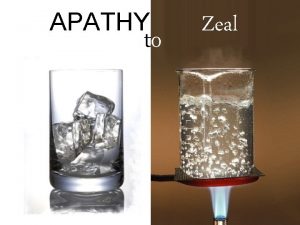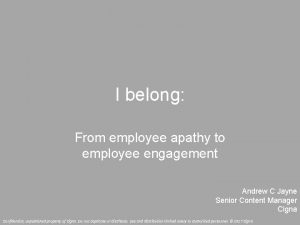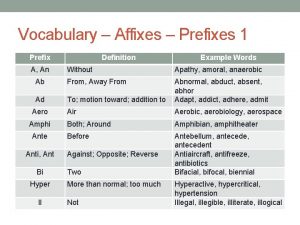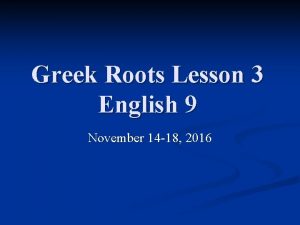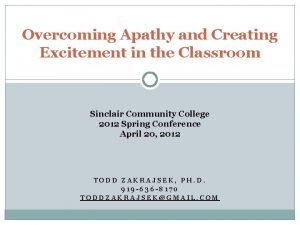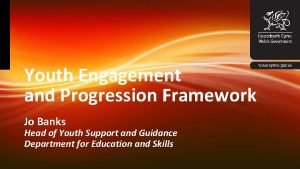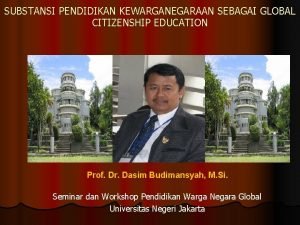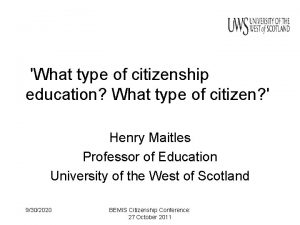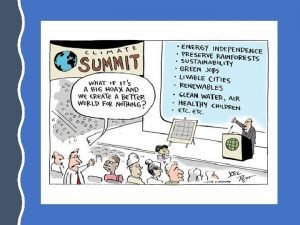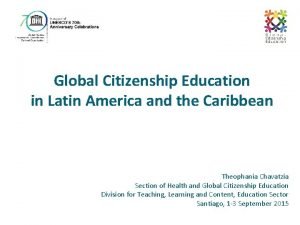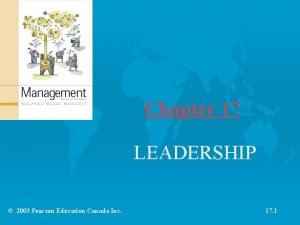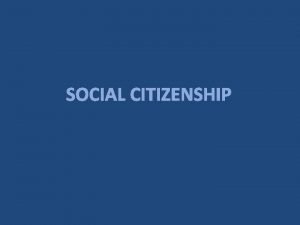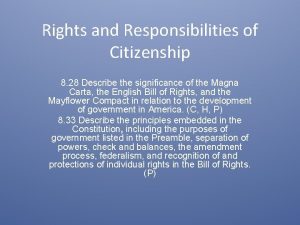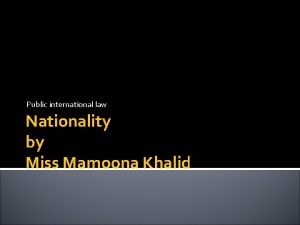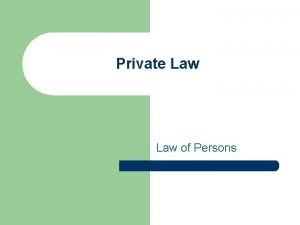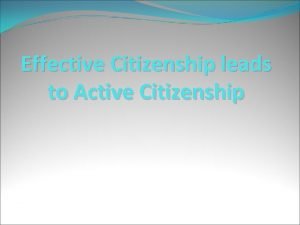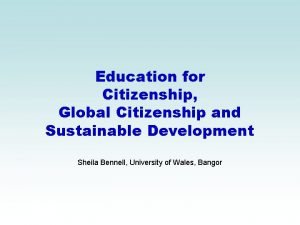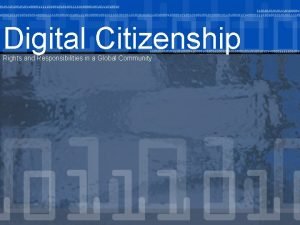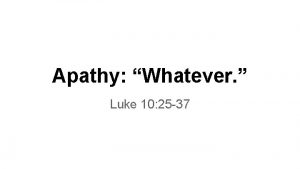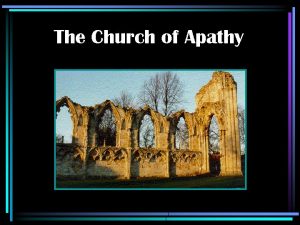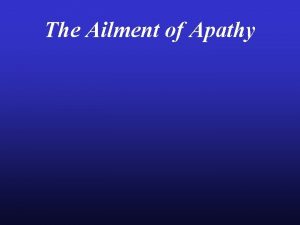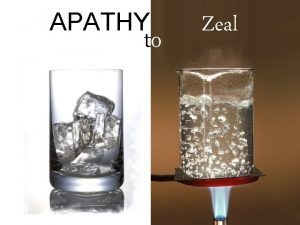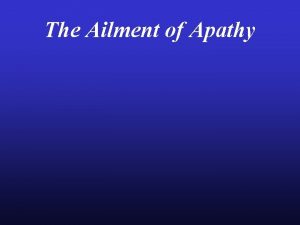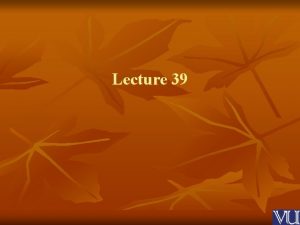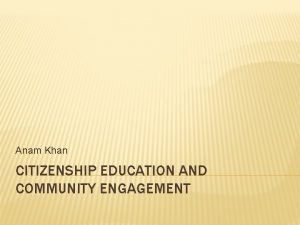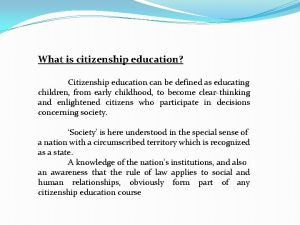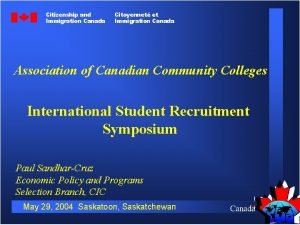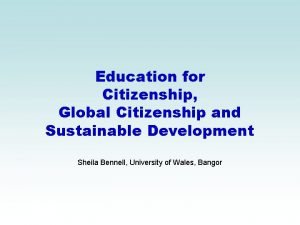Youth Citizenship in Canada Apathy Engagement Education EDU
























- Slides: 24

Youth Citizenship in Canada: ‘Apathy’, Engagement, & Education EDU 6426 | Dr. Douglas Fleming June 11, 2015 Carrie Griffith, Feifei Ding, Ryan Douglass, & Jennifer Bergen University of Ottawa

Presentation Outline ● Youth Citizenship ● Are Youth Apathetic? ■ Activity #1 ● Factors Influencing Youth Civic Engagement ■ Activity #2 ■ Case Study: Shannen Koostachin ● Implications for Youth Civic Education ● Further Discussion & Questions

What is ‘Youth Citizenship? ’ What is ‘Youth Civic Engagement’? ● Who ‘youth’ are differs contextually, and can range anywhere between the ages of 14 -29, depending on the study. ● Youth civic and political participation is tied to the idea of citizenship (Sherrod, Flanagan, & Youniss, 2002). ● O’Neil (2007) argues that youth political participation is limited to actions, whereas youth civic/political engagement also refers to values, beliefs, and efficacy (p. 2). Civic engagement then, extends these values and beliefs to other community initiatives.

What is ‘Youth Citizenship? ’ Why is youth civic engagement important? ● “ … the health and stability of a modern democracy depends … on the qualities and attitudes of its citizens” (Kymlicka & Norman, 2000). ● Democratic societies “must have a type of education which gives individuals a personal interest in social relationships and control, and the habits of mind which secure social changes” (Dewey, 1924, p. 115). ● Many scholars and policymakers believe that effective citizenship education can affect youth dis/engagement (Hughes, Print & Sears, 2010; Sears, 2004; Youniss, 2011).

Are Youth Apathetic? Group Activity #1: Think, Pair, Share ➔ On your own, draft an answer to the question: “Are Canadian youth apathetic citizens? ” ➔ Once you have an answer, turn to a partner and discuss why you answered the way you did. ➔ Next, pairs will share their answers with the group.

Are Youth Apathetic? View 1 Youth civic engagement in societal concerns is fading, democratic citizenship is eroding. View 2 Increase in youth political engagement, but in more untraditional forms. View 3 Acknowledge that both engagement and disengagement are simultaneously occurring as young people navigate an entirely new world.

Are Youth Apathetic? Apathy is Boring: Youth Voting & Volunteering VISION: A Canada where every young Canadian is an active and creative citizen, and youth are meaningfully engaged in all aspects of the democratic process. Vote Mobs: Youth Voting Inspiration for the first vote mob in Guelph came from CBC comedian Rick Mercer's rant calling on young people to "do the unexpected" and vote. The vote mobs were then widely spreaded in Canadian PSE, and then to the US.

Are Youth Apathetic? Opting out or forced out? ● “Not ‘one of us’- non-engaged youth feel about politics and political leadership” (Bastedo, 2015). ○ More educated youth vote, few educated, aboriginal youth, language minorities, new immigrant youth vote. ● Subjective Well-Being Vs. Political Participation (Lorenzini, 2015). ○ Life dissatisfaction fosters the participation in contacting activities of employed youth. Life satisfaction fosters participation in protest activities of the unemployed youth

Factors Influencing Youth Civic Engagement Group Activity #2 ● In groups of three, create a web of factors (on your flip -chart paper) that you think may influence youth civic engagement. ● Once you have drawn as many as you can think of, see if you can categorize or group any of them together. ● Present your themes and factors to the class.

Factors Influencing Youth Civic Engagement Parents ● Adolescents whose parents are interested in political and social issues have higher levels of civic knowledge (Cicognani et al. , 2011; Gniewos, 2009; Schulz, 2010). ● Individuals whose parents engage in civic volunteering have higher levels of civic and political participation (Briggs, 2008; Cicognani et al. , 2011; Zurkin et al. , 2006). ● Parents act as brokers and advocates for youth (Leventhal & Brooks-Gunn, 2000).

Factors Influencing Youth Civic Engagement Social Class & Community ○ Youth from higher socioeconomic backgrounds have the resources that facilitate political and civic engagement (Fisher, 2012; White & Gager, 2007). They also engage more in political discussion and report they are more willing to take action (Wicks, 2013). ○ Neighborhood social capital may operate to increase positive youth engagement (Duke, 2011; Leventhal & Brooks-Gunn, 2000). ○ Sense of community significantly predicts voting intentions (Cicognani et al. , 2011).

Factors Influencing Youth Civic Engagement Organizations or Committees ● Through adolescent involvement in civic groups and voluntary associations, youth are more likely to become politically involved (Mc. Farland & Thomas, 2006; Sherrod et al. , 2010). ● Youth participation in extracurricular activities such as student media, student council/government, and arts/drama clubs predicts political participation in young adulthood (Denault & Poulin, 2009; Fredricks & Eccles, 2006; Glanville, 1999; Smith 1999). ● Adolescent involvement in community organisations offering programmes designed to foster civic and political engagement, predicts adult political participation (Larson & Hansen, 2005).

Case Study: Shannen Koostachin ● “At 14, she was nominated for the International Children's Peace Prize for her work to end the systemic under-funding of First Nation school children” (Angus, 2012). ● Reason for their traditional and nontraditional engagement: education. ● “The five success factors for social inclusion include: funding. . . coordination … access … reflexivity … and empowerment” (Wearing, 2010). “. . the largest youth driven child’s right movement in Canadian history” - Charlie Angus, MP Hi-Ho Mistahey

Case Study: Shannen Koostachin ‘Formal / traditional’ citizenship participation: ● Protests for a safe school on the reserve, letter writing campaign to MPs, news conferences. “. . at the age of 13, Shannen stood beside a pair of grade-eight friends at a news conference on Parliament Hill. In clear voices, they made their case to the country. Then they marched off to confront the Minister of Indian and Northern Affairs Canada (INAC)” (Goyette, 2010). ‘Nontraditional’ citizenship participation: ● ● You. Tube video campaign Facebook campaign

Implications for Civic Education Civic education leads to civic and political engagement (Kahne, Crow, & Lee, 2013). However! Certain civic knowledge, skills, and values, and certain forms of civic education pedagogy do not serve all students equally (Kincheloe, 2008): ● How is the educational system structured? ● What curricular knowledge, skills, and values are thought to be needed for civic participation? ● What are the pedagogies, student-teacher relationships, classroom and school structures? (Reid, Gill, & Sears, 2010, pp. 5 -6).

Implications for Civic Education How should civics education be taught? 1. Knowledge Transmission (Evans, 2006; Llewellyn, Cook, & Molina, 2010; Losito & Mintrop, 2010; Sears & Hughes, 1996) 1. Deliberative Classrooms (Bickmore, 2008; Feldman 2007; Hyslop-Margison & Thayer, 2009; Kahne, Crow, & Lee, 2013; Strachan, 2006; Torney-Purta, 2007) 1. Service-learning (Mendel-Reyes, 1998; Pasek, Feldman, Romer, & Jamieson, 2008; Youniss, 2011) 1. Youth-led Projects / Participatory Action Research (Anderson, 2015; Cammarota & Romero, 2011; Ginwright, 2008; Mirra, Morrell, Cain, Scorza, & Ford, 2013)

Implications for Civic Education

Discussion & Questions ● Should formal or informal participation by youth be emphasized? ● How do YOU think civics education should be taught? ● What are the drawbacks to studying youth as a homogenous group?

References Andersson, E. (2015): Situational political socialization: a normative approach to young people's adoption and acquisition of political preferences and skills, Journal of Youth Studies, DOI: 10. 1080/13676261. 2015. 1020926 Anderson, V. , Mc. Kenzie, M. , Allan, S. , Hill, T. , Mc. Lean, S. , Kayira, J. , Knorr, M. , Stone, J. , Murphy, J. , & Butcher, K. (2015). Participatory action research as pedagogy: Investigating social and ecological justice learning within a teacher education program. Teaching Education, 26(2), 179 -195. Angus, C. (2010, Jul. 28, updated 2013, Sep. 09). Lives Lived Shannen Koostachin. The Globe and Mail. Angus, C. (2012, Jan. 10, updated 2012, Mar. 11). Shannen Koostachin “Really Believed that Kids Could Change the World”. The Huffington Post. Retrieved from http: //www. huffingtonpost. ca/charlie-angus/shannen-koostachin_b_1197267. html Bastedo, H. (2015). Not ‘one of us’: understanding how non-engaged youth feel about politics and political leadership. Journal of Youth Studies, 18 (5), p. 649 -665 Bergen, J. K. (2015). “‘The Impassioned Spirit is Never Neutral’: Critical Pedagogy and Youth Democratic Participation”. Presentation at CSSE 2015. University of Ottawa. Bickmore, K. (2008). Social justice and the social studies. In L. Levstik & C. Tyson (Eds. ), Handbook of Research in Social Studies Education (pp. 155 -171). New York: Routledge. Blackburn, C. (2009). Differentiating indigenous citizenship: Seeking multiplicity in rights, identity, and sovereignty in Canada. American Ethnologist, 36 (1), pp. 66 -78 Dewey, John. (1924). Democracy and Education: An Introduction to the Philosophy of Education. New York: The Macmillan Company. Cammarota, J. & Romero, A. (2011). Participatory action research for high school students: Transforming policy, practice, and the personal with social justice education. Educational Policy, 25(3), 488 -506.

References Cicognani, E. , Zani, B. , Fournier, B. , Gavray, C. , & Born, M. (n. d. ). Gender differences in youths’ political engagement and participation. The role of parents and of adolescents’ social and civic participation. Journal of Adolescence, 561 -576. Chiessi, M. , Cicognani, E. , & Sonn, C. (2015). Brief Scale of Sense of Community for Adolescents. Psyc. TESTS Dataset. Dehaas, J. (2013). Young Canadians aren’t formally participating in democracy. Macleans. July 8, 2013. http: //www. macleans. ca/education/uniandcollege/youngcanadians-arent-formally-participating-in-democracy/ Denault, A-S. , & Poulin, F. (2009). Intensity and breadth of participation in organized activities during the adolescent years: Multiple associations with youth outcomes. Journal of Youth and Adolescence, 38, 1199 -1213. doi: 10. 1007/s 10964 -009 -9437 -5 Duke, N. , Borowsky, I. , & Pettingell, S. (2011). Adult Perceptions of Neighborhood: Links to Youth Engagement. Youth & Society, 408 -430. Evans, M. (2006). Educating for citizenship: What teachers say and what teachers do. Canadian Journal of Education, 29(2), 410 -435. Farthing, R. (2010): The politics of youthful antipolitics: representing the ‘issue’ of youth participation in politics. Journal of Youth Studies 13(2) , p. 181 -195. Feldman, L. , Pasek, J. , Romer, D. , & Jamieson, K. H. (2007). Identifying best practices in civic education: Lessons from the student voices program. American Journal of Education, 114, 75 -100. doi: 10. 1086/520692 Fisher, D. R. (2012). Youth political participation: Bridging activism and electoral politics. Annual Review of Sociology, 38, 119 -137. doi: 10. 1146/annurev-soc-071811145439 Fredricks, J. A. , & Eccles, J. S. (2006). Is extracurricular participation associated with beneficial outcomes? Concurrent and longitudinal relations. Developmental Psychology, 42, 698 -713. doi: 10. 1037/0012 -1649. 42. 4. 698 Glanville, J. (1999). Political socialization or selection? Adolescent extracurricular participation and political activity in early adulthood. Social Science Quarterly, 80, 279290.

References Ginwright, S. (2008). Collective radical imagination: Youth participatory action research and the art of emancipatory knowledge. In J. Cammarota & M. Fine (Eds. ), Revolutionizing education: Youth participatory action research in motion (pp. 13 -22). New York: Routledge. Gniewosz, B. , Noack, P. , & Buhl, M. (2009). Political alienation in adolescence: associations with parental role models, parenting styles and classroom climate. International Journal of Behavioral Development, 3, 337– 346. Goyette, L. (2010, December). Still waiting in Attawapiskat. Canadian Geographic. http: //www. canadiangeographic. ca/magazine/dec 10/attawapiskat. asp Hyslop-Margison, E. & Thayer, J. (2009). Teaching democracy: Citizenship education as critical pedagogy. Rotterdam: Sense. Hughes, A. S. , Print, M. & Sears, A. (2010). Curriculum Capacity and Citizenship Education: A Comparative Analysis of Four Democracies. Compare: A Journal of Comparative and International Education, 40(3). 293 -309. DOI: 10. 1080/03057920903395528 Kahne, J. , Crow, D. , & Lee, N-J. (2013). Different pedagogy, different politics: High school learning opportunities and youth political engagement. Political Psychology, 34, 419 -441. doi: 10. 1111/j. 1467 -9221. 2012. 00936. x Kymlicka, W. & Norman, W. (Eds. )(2000). Citizenship in culturally diverse societies: Issues, contexts and concepts. New York: Oxford. Larson, R. , & Hansen, D. (2005). The development of strategic thinking: learning to impact human systems in a youth activist program. Human Development, 48, 327– 349. Leventhal, T. , & Brooks-Gunn, J. (2000). The neighborhoods they live in: The effects of neighborhood residence on child and adolescent outcomes. Psychological Bulletin, 126, 309 -337. Llewellyn, K. R. , Cook, S. A. , & Molina, A. (2010). Civic learning: Moving from the apolitical tothe socially just. Journal of Curriculum Studies, 42(6), 791 -812.

References Losito, B, & Mintrop, H. (2001). The teaching of civic education. In J. Torney-Purta (Ed. ), Citizenship and education in twenty-eight countries: Civic knowledge and engagement at age fourteen (pp. 157 -173). Amsterdam: The International Association for the Evaluation of Educational Achievement. Mc. Farland, D. A. , & Thomas, R. J. (2006). Bowling young: How youth voluntary associa- tions influence adult political participation. American Sociological Review, 71, 401 -425. doi: 10. 1177/000312240607100303 Mendel-Reyes, M. (1998). A pedagogy for citizenship: Service learning and democratic education. New Directions for Teaching and Learning, Spring(73), 31 -38. Mirra, N. , Morrell, E. D. , Cain, E. , Scorza, D. , & Ford, A. (2013). Educating for a critical democracy: Civic participation reimagined in the council of youth research. Democracy & Education, 21(1), 1 -10. Mycock, A. & Tonge, J. (2012). The Party Politics of Youth Citizenship and Democratic Engagement. Parliamentary Affairs, 65, 138 -161 Obomsawin, A. (Director). (2013, September 7). Hi-Ho Mistahey!. National Film Board of Canada. https: //www. nfb. ca/film/hi-ho_mistahey_en/ O’Neil, B. (2007). Indifferent or just different? The political and civic engagement of young people in Canada: Charting the course for youth civic and political participation. Ottawa: Canadian Policy Research Networks. Pasek, J. , Feldman, L. , Romer, D. , & Jamieson, K. H. (2008). Schools as incubators of democratic participation: Building long-term political efficacy with civic education. Applied Developmental Science, 12(1), 26 -37. Putnam, R. (2000). Bowling alone: The collapse and revival of American community. New York, NY: Simon and Schuster. Schulz, W. , Ainley, J. , Fraillon, J. , Kerr, D. , & Losito, B. (2010). Initial findings from the IEA international civic and citizenship education study. Amsterdam: IEA.

References Schulz, W. , Ainley, J. , Fraillon, J. , Kerr, D. , & Losito, B. (2010). Initial findings from the IEA international civic and citizenship education study. Amsterdam: IEA. Sears, Alan. (2004). In search of good citizens. In A. Sears & I. Wright (Eds. ), Challenges & Prospects for Canadian Social Studies (pp. 90 -106). Vancouver: Pacific Educational Press. Sears, A. & Hughes, A. (1996). Citizenship education and current educational reform. Canadian Journal of Education, 21(2), 123 -142. Sherrod, L. R. , Flanagan, C. , & Youniss, J. (2002). Dimensions of citizenship and opportunities for youth development: The what, why, when, where and who of citizenship development. Applied Developmental Science, 6, 264 -272. doi: 10. 1207/S 1532480 XADS 0604_14 Smith, E. S. (1999). Effects of investment in the social capital of youth on political and civic behavior in young adulthood: a longitudinal analysis. Political Psychology, 20(3), 553– 580. Strachan, J. C. (2006). An argument for teaching deliberative collective actions skills in the political science classroom. PS, Political Science & Politics, 39(4), 911 -916. Torney-Purta, J. , Barber, C. H. , & Wilkenfeld, B. (2007). Latino adolescent’s civic development in the United States: Research results from the IEA Civic Education study. Journal of Youth & Adolescence, 36, 111 -125. · Tupper, J. (2008). Feminism confronts democracy: Challenging universal citizenship and democratic education. In A. Abdi & G. Richardson (Eds. ). Decolonizing democratic education (pp. 67 -76). Rotterdam: Sense. Verba, S. , Schlozman, K. L. , & Brady, H. E. (1995). Voice and equality: Civic voluntarism in American politics. Cambridge, MA: Harvard University Press. Wearing, Michael (2010). Strengthening youth citizenship and social inclusion practice – The Australian case: Towards rights based and inclusive practice in services for marginalized young people. Children and Youth Services Review, 33, 534 -540.

References White, A. M. , & Gager, C. T. (2007). Idle hands and empty pockets? Youth involvement in extracurricular activities, social capital, and economic status. Youth & Society, 39, 75 -111. Wicks, R. , Wicks, J. , Morimoto, S. , Maxwell, A. , & Schulte, S. (2013). Correlates of Political and Civic Engagement Among Youth During the 2012 Presidential Campaign. American Behavioral Scientist, 622 -644 Youniss, J. (2011). Civic education: What schools can do to encourage civic identity and action. Applied Developmental Science, 15(2), 98 -103. Zukin, C. , Keeter, S. , Andolina, M. , Jenkins, K. , & Delli Carpini, M. X. (2006). A new engagement? Political participation, civic life, and the changing American citizen. New York: Oxford University Press.
 Apathy word surgery
Apathy word surgery Apathy etymology
Apathy etymology Apathy
Apathy Belong employee engagement
Belong employee engagement Examples of affixes
Examples of affixes Apathy is the solution
Apathy is the solution Apathy word origin
Apathy word origin Apathy in a sentence
Apathy in a sentence Apathy etymology
Apathy etymology Youth engagement and progression framework
Youth engagement and progression framework Konsep global citizenship education
Konsep global citizenship education Types of citizenship education
Types of citizenship education Cspe cba
Cspe cba Global citizenship education topics and learning objectives
Global citizenship education topics and learning objectives Ministry of education secondary engagement program
Ministry of education secondary engagement program Edu.sharif.edu
Edu.sharif.edu Pearson publishing canada
Pearson publishing canada Civil citizenship
Civil citizenship Describe citizenship
Describe citizenship Khalid nationality
Khalid nationality Private law
Private law Apa itu tradisi citizenship transmission
Apa itu tradisi citizenship transmission What is effective citizenship
What is effective citizenship What is global citizenship
What is global citizenship Digital citizenship examples
Digital citizenship examples

